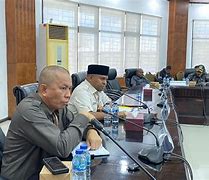
- Kerajaan Inggris Raya merupakan kerajaan yang paling terkenal di Eropa, bahkan di dunia. Adapun sang penguasa, Ratu Elizabeth II memiliki kekayaan mencapai USD500 juta atau setara Rp6,98 triliun (kurs Rp13.968 per USD).
Namun, ratu yang mulai bertakhta sejak 1952 tersebut bukanlah bangsawan paling tajir di Benua Biru. Mengutip dari
, Senin (14/5/2018), penguasa monarki paling kaya di Eropa justru di tempati oleh kerajaan kecil di Eropa.
Media yang berbasis di New York, Amerika Serikat ini, mengurut kancing 10 raja dan ratu paling kaya di Eropa berdasarkan kekayaan bersih. Namun kekayaan bersih ini sulit diperkirakan angka pastinya, karena ada yang termasuk tunjangan yang diberikan oleh negara dan kekayaan pribadi. Berikut daftar 10 raja dan ratu paling kaya di Eropa.
Kekayaan bersih: USD13 juta setara Rp181,59 miliar.
Sebuah catatan sipil di Belgia pada 2013 melansir, kekayaan bersih Raja Philippe mencapai USD13.801.830. Namun, angka ini belum termasuk tunjangan tambahan yang dibiayai oleh negara. Dan Raja Philippe memiliki hak atas properti Kerajaan Belgia yang dimiliki oleh negara. Properti ini dikelola mandiri secara finansial, namun tidak boleh dijual ke pihak lain.
Kekayaan bersih: USD20 juta atau setara Rp279,37 miliar.
Keluarga kerajaan memiliki delapan istana, lima tempat tinggal, dan 10 kastil. Pada 2015, gaya hidup kerajaan menjadi sorotan publik karena menghabiskan uang hingga USD8,9 juta alias Rp124 miliar. Seiring krisis finansial yang menerpa Spanyol di 2015, Raja Felipe VI akhirnya memotong gaji sebesar 20% menjadi USD267.447 alias Rp3,7 miliar.
Kekayaan bersih: USD30 juta atau setara Rp419 miliar.
Raja Harald V tidak pernah membayar pajak atas kekayaannya. Ia menginvestasikan kekayaan untuk membeli kapal pesiar. Kerajaan Norwegia dilaporkan membiayai keluarga kerajaan sebesar USD72 juta per tahun.
Pada 2017, pemerintah Norwegia mengalokasikan uang sekitar USD32,21 juta ke keluarga kerajaan dan sebesar USD14,88 juta kepada raja dan ratu untuk keperluan pribadi.
Kekayaan bersih: USD40 juta atau setara Rp558 miliar.
Ratu Margrethe II telah berkuasa di Denmark sejak tahun 1972. Daftar sipil Denmark mengemukakan negara memberikan uang kepada keluarga kerajaan sebesar USD12,8 juta per tahun, untuk kegiatan, operasional, dan pengeluaran pribadi sang ratu.
Kekayaan bersih: USD70 juta alias Rp977 miliar.
Pada 2015, Raja Carl XVI Gustaf menerima dana sebesar USD7,6 juta per tahun. Dan Istana Swedia menerima hampir USD7,4 juta untuk kepentingan monarki tersebut. Kekayaan sang raja termasuk kepemilikan pribadi atas Istana Solliden, rumah musim panas di tepi Laut Baltik.
Kekayaan bersih: USD300 juta alias Rp4,19 triliun.
Ratu Beatrix memang telah turun takhta dari Kerajaan Belanda sejak 2013, dan digantikan oleh puteranya Raja Willem-Alexander. Namun ia tetap menjadi tokoh paling menonjol di Kerajaan Belanda. Ratu Beatrix memiliki kekayaan pribadi yang terdiri dari real estat dan saham di perusahaan minyak asal Belanda, Shell.
Kekayaan bersih: USD500 juta alias Rp6,98 triliun.
Kekayaan bersih Ratu Elizabeth II terdiri dari properti, barang-barang seni, dan investasi. Sebagian besar kekayaannya berasal dari The Crown Estate, yang mencakup Istana Buckingham, perhiasan dan mahkota kerajaan.
Meski ini milik negara Inggris dan bukan sang ratu, namun Elizabeth II memiliki tempat tinggal di Balmoral Castle dan Istana Sandringham. Majalah
menaksir kekayaan pribadi sang ratu mencapai USD530 juta.
Lembaga Sovereign Grant pernah menghitung, dari tahun 2016-2017, keuntungan dari Crown Estate mencapai USD57,9 juta. Sang ratu menerima sekitar USD20,16 juta dari biaya sewa tanah dan properti milik kerajaan.
Kekayaan bersih: USD1 miliar alias Rp13,9 triliun.
Pangeran Albert II dari Monako dilaporkan memiliki hak atas seperempat wilayah Kerajaan Monako, rumah di Philadelphia, Amerika Serikat yang berasal dari ibunya, aktris kenamaan Grace Kelly. Koleksi mobil antik, saham di resor Monte Carlo Societe des Bains de Mer, koleksi perangko yang mahal, menurut catatan House of Grimaldi. Pada 2015, Monako mengeluarkan dana USD52,78 juta untuk keluarga kerajaan.
Kekayaan bersih: USD4 miliar alias Rp55,8 triliun
Grand Duke Henri Guillaume sejak naik takhta pada tahun 2000, tidak pernah menerima gaji. Meski demikian, aturan kerajaan sejak 1948, Luksemburg memberikan dana USD324.851 per tahun untuk kegiatan operasional kerajaan.
Dan pada 2017, anggaran untuk biaya rumah tangga kerajaan naik menjadi USD12 juta. Sang bangsawan memiliki hak atas administrasi kerajaan, istana, dan tanah.
Kekayaan bersih: USD5 miliar alias Rp69,8 triliun.
Sejak naik takhta pada 1989, Pangeran Hans Adam II tidak pernah menerima gaji. Negara hanya memberikan tunjangan sebesar USD270.709 atau setara Rp3,78 miliar untuk keperluan operasional kerajaan.
Bila kekayaannya sangat besar, karena Pangeran Hans Adam II memiliki bank bernama LGT Group, investasi di Prince of Liechtenstein Foundation, aset real estat, tanah, dan perkebunan anggur.
Melde dich an, um fortzufahren.
Offenbar hast du diese Funktion zu schnell genutzt. Du wurdest vorübergehend von der Nutzung dieser Funktion blockiert.
Wenn dies deiner Meinung nach nicht gegen unsere Gemeinschaftsstandards verstößt,
RATU3388 - TOKO ONLINE SLOT GACOR RATU SLOT TERPERCAYA DI INDONESIA Ratu3388 merupakan toko penyedia game slot online yang sudah terpercaya di Indonesia. Bernaung di dunia game sejak 2022 hingga sekarang yang selalu menjaga kualitas pelayanan dan selalu mengupadate game slot online yang setiap hari semakin banyak game slot online terbaru. Ratu3388 bekerja sama dengan sejumlah provider slot online ternama dan sudah di kenal pada kalangan masyarakat Indonesia seperti PRAGMATIC, PGSOFT, NOLIMITCITY, HABANERO, JOKER, PLAYTECH, EVOPLAY, FASTSPIN dan masih banyak lainnya. Dengan banyaknya provider yang sudah bekerja sama dengan ratu3388 maka bisa disebut sebagai toko yang sudah mempunyai lisensi yang matang dalam bidangnya di toko game slot online. Sehingga member hanya perlu mendaftarkan 1 user id saja untuk dapat bermain semua permainan yang ada di ratu3388. Ratu3388 menjual produk voucher minimal 30rb untuk dapat bermain game slot online. Proses sangat cepat untuk pengisian voucher ke dalam user id. silahkan check out pada keranjang di atas! Daftarkan user ID kamu dan dapatkan kepuasan dalam bermain di toko game slot online ratu3388!
Austronesian honorific title for male Fijians of chiefly rank
Ratu ([ˈrɑːtu]) is an Austronesian title used by male Fijians of chiefly rank. An equivalent title, adi (pronounced [ˈandi]), is used by females of chiefly rank. In the Malay language, the title ratu is also the traditional honorific title to refer to the ruling king or queen in Javanese culture (though it has since been used in modern contexts to refer to both queen regnant and queen consort of any nation, e.g. "Ratu Elizabeth II" and "Ratu Camilla"). Thus in Java, a royal palace is called "keraton", constructed from the circumfix ke- -an and Ratu, to describe the residence of the ratu.
Ratu: A chiefly title for men used alone as a form of address, or in front of the chief's name, only in certain places The source of the Fijian title is Verata, and it has spread throughout Fiji during the past century, now applied to many local, minor chiefs as well as the major ones. The concept of his type of title is from Tonga. Strictly speaking, the title belongs only in Verata. In their time, Cakobau or Tanoa, his father, never themselves used the title of Ratu. It does not appear with Cakobau's name or any other chief's name in the Deed of Cession of 1874. (Exceptionally, in the 1850s, Ratu Mara Kapaiwai was one of the few who did use the word Ratu, though that may have been a name rather than a title.) It has been affixed to the names of Tana and Cakobau by later Fijians, retroactively. The Cakobau Memorial Church on Bau Island is now referred to as the Ratu Cakobau Church. Ratu may also be used as a personal first name or second name. The title may be acquired as part of a chiefly name, by a namesake. In such cases, it does not imply chiefly status. Adi is the female equivalent, sometimes heard as Yadi in Lau.
Ra is a prefix in many titles (ramasi, ramalo, rasau, ravunisa, ratu), and tu means simply "chief". The formal use of "ratu" as a title in a name (as in "Sir" in British tradition) was not introduced until after the cession of 1874. Until then, a chief would be known only by his birth name and his area-specific traditional title.
Regional variations include ro in Rewa and parts of Naitasiri and Tailevu, roko in parts of Naitasiri, Rewa and Lau (particularly the Moala group), ra in parts of Vanua Levu, particularly the province of Bua.
In all those places, it is used as a title preceding the person's name, much like "prince", "duke", "earl", "baron" or "lord".
The semantics, however, are a little different in Fijian although the name and title are usually reversed, for example:
In English, one would say His Royal Highness (Styling) Prince (address/title) Andrew (name), Duke of York (noble title).
In Fijian, one would say, Gone Turaga Na (Styling) Roko Tui Bau (noble title), Ratu (address/title) Joni Madraiwiwi (name).
The Fijian nobility consists of about seventy chiefs, each of whom descends from a family that has traditionally ruled a certain area. The chiefs are of differing rank, with some chiefs traditionally subordinate to other chiefs. The Vusaratu clan is regarded as the highest chiefly clan, with regards to the people of Bau until the rise of the Tui Kaba clan leader, who exiled all Vusaratu members. They are the heirs of Ratu Seru Epenisa Cakobau, the Vunivalu of Bau or Tui Levuka (Paramount Chief of Bau, on the eastern side of Viti Levu, Fiji's most populous island), He proclaimed himself "Tui Viti/King of Fiji" in 1871. (He was only recognised by the British and a few provinces of Viti Levu) He along with 12 high Chiefs subsequently ceded the islands to the United Kingdom in 1874.
Other prominent chiefly clans include the Vuanirewa (the traditional rulers of the Lau Islands) and the Ai So'ula (the traditional rulers of Vanua Levu).
During the colonial rule (1874–1970), the British kept Fiji's traditional chiefly structure and worked through it. They established what was to become the Great Council of Chiefs, originally an advisory body, but it grew into a powerful constitutional institution. Constitutionally, it functions as an electoral college to choose Fiji's president (a largely honorary position modelled on the British monarchy), the vice-president, and 14 of the 32 senators, members of Parliament's "upper house", which has a veto over most legislation. The 18 other senators are appointed by the Prime Minister (9), the Leader of the Opposition (8), and the Council of Rotuma (1); these appointees may, or may not, be of chiefly rank also. (The Senate was modelled on Britain's House of Lords, which consists of both hereditary and life peers.)
The presidency, vice-presidency, and fourteen senators are the only constitutional offices whose appointment is controlled by persons of chiefly rank. Chiefs in post-independence Fiji have always competed for parliamentary seats on an equal footing with commoners. In the years following independence, this favored the chiefly class, as the common people looked to them as their leaders and generally voted for them. For several elections, many ethnic Fijian members of the House, which is elected by universal suffrage, were of chiefly rank, but in recent elections, the discrepancy between chiefs and commoners is slowly narrowing, as commoners are becoming better educated and have begun to work their way into the power structure. The chiefs, however, retain enormous respect among the Fijian people. In times of crisis, such as the coups of 1987 and the third coup of 2000, the Great Council of Chiefs often stepped in to provide leadership when the modern political institutions have broken down.























